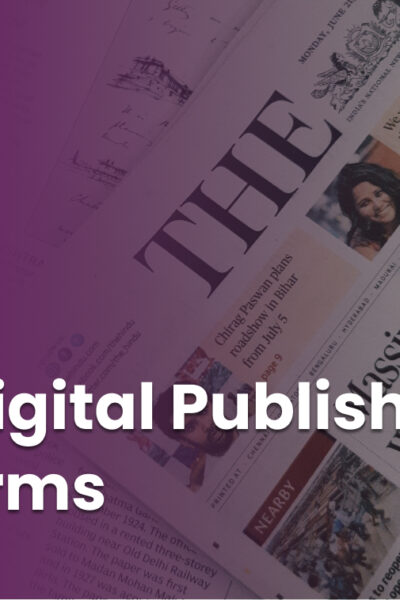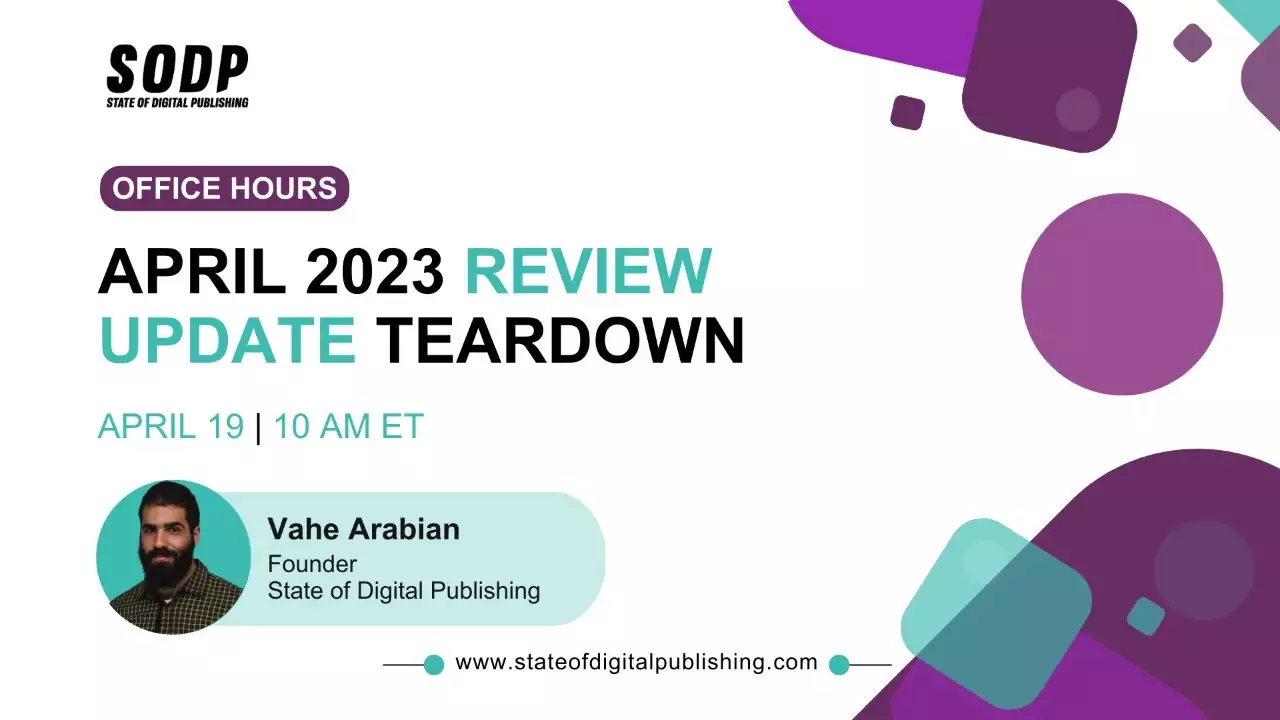In November 2023, State of Digital Publishing (SODP) hosted PubTech2023 – an online event for digital publishing and news media professionals.
This article is based on the summary of key learnings of a presentation by Vahe Arabian, Founder of SODP, and Khalil A. Cassimally, Head of Audience Insights at The Conversation.
With the advent of generative AI into the media landscape, we have witnessed many publishers taking polar opposite approaches, with some, like The New York Times and The Center for Investigative Reporting, suing OpenAI, while a number of publishers sought to establish partnerships – e.g., BuzzFeed, TIME, and The Wall Street Journal. Most publishers remain somewhere in the middle, cautiously experimenting with the possibilities of generative AI.
While the impact of generative AI on the digital media industry has certainly been large-scale, it is not the only tech-related trend that online publishers should be keeping an eye on.
Vahe Arabian and Khalil Cassimally discussed the landscape of publishing technology during their session at PubTech 2023. Here are the trends that they identified.
Publishing Tech Trends 2024
1. The shift to audio and video
There has been a significant shift towards audio and video content in media. This shift is partly due to the content becoming more discoverable and indexable, with new generations contributing to this trend.
2. Generative AI brought a breakthrough year for AI in media publishing
While generative AI hasn’t completely revolutionized AI media publishing, it has indirectly influenced the industry. A study by Originality.ai revealed that 65% of high-traffic sites have adopted AI in content production. This includes incorporating AI-generated summaries and content. Adopting AI has raised questions about productivity efficiencies and has leveled the playing field in social search.
3. Tech platforms are suffering hubris
Platforms like Facebook have experienced a decline in referral traffic. There’s a focus on developing their own ecosystems with creator tools, sometimes leading to neglecting innovation on these platforms. This trend has caused frustration among publishers trying to adapt to these evolving platforms.
4. Premium inventory and subscriber value resilience
Despite initial optimism, there hasn’t been a significant increase in premium inventory and subscriber value. However, there is noticeable resilience in the industry. Economic factors like recession and inflation influence short-term strategies, while long-term relationships prevail.
5. The age of privacy tech is here
Privacy tech has matured significantly. With the depreciation of third-party cookies, ad tech is moving towards browser-based solutions that comply with legal frameworks like GDPR. With the Google Privacy Sandbox, third-party cookie depreciation is implemented, signaling a move towards a safer and more private web, potentially leading to the realization of Web 3.0. Publishers should know the compliance requirements and ensure they comply with these upcoming changes.
6. Youtube-ification of everything
The ubiquity of YouTube on video content formats, especially on the rising TikTok, is noticeable. TikTok is experimenting with longer-form videos, competing for desktop searches against Google, despite agreeing to allow its short-form videos to get indexed within its search results and providing more monetization opportunities for creators. There’s also an ongoing need to create personable interactions with audiences, and with creators driving behavior of optimizing for algorithms only substantiates the need for longer-form content.
Content from our partners
7. A shift toward topic and intent discovery, not discoverability
There’s a notable shift towards topic intent discovery rather than discoverability. Search engines provide answers directly in search results, impacting site traffic. This change necessitates reevaluating content strategy, focusing on delivering quality content that aligns with brand trust.
Download the ebook of learnings from PubTech2023 here.












